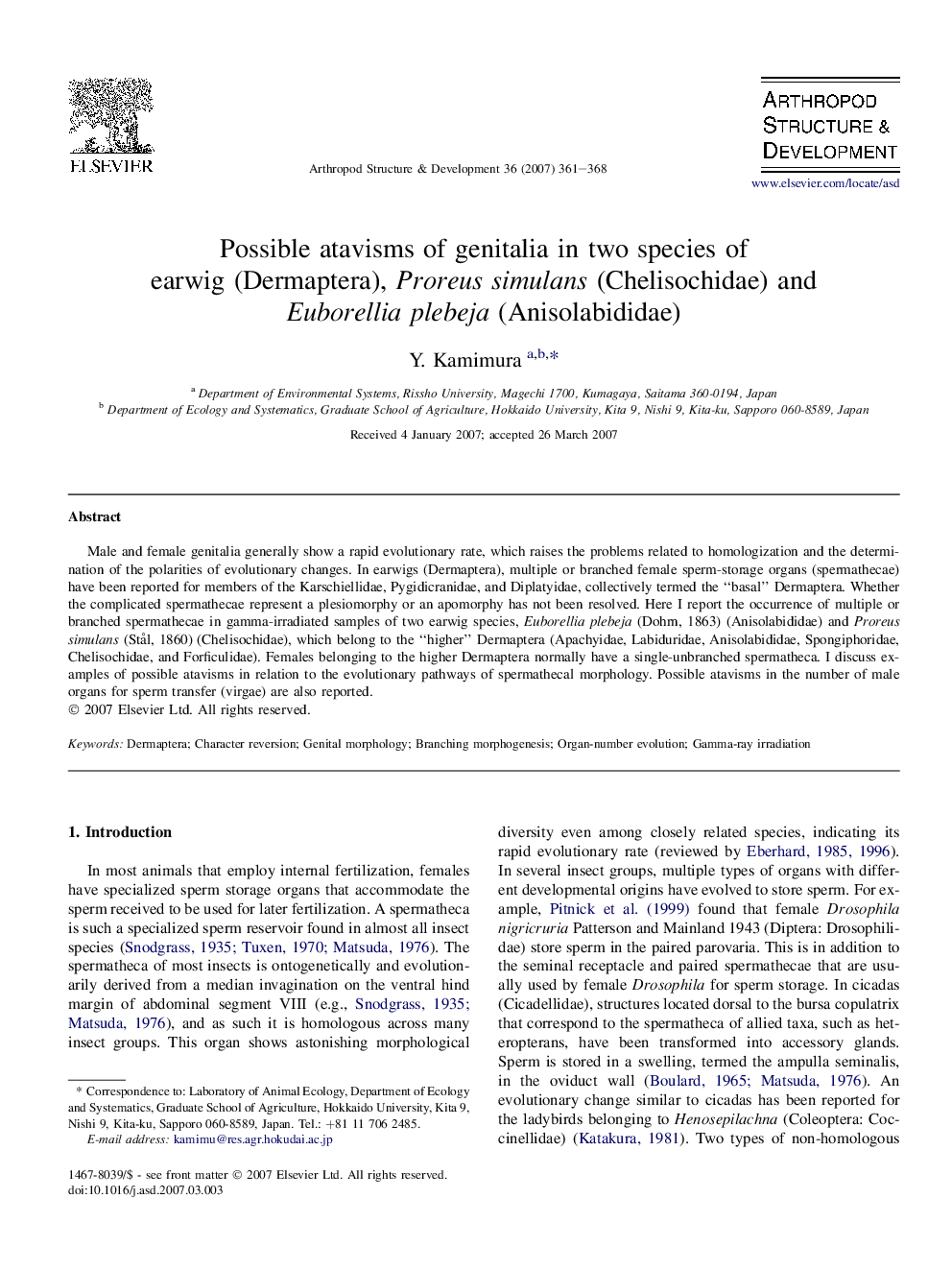| Article ID | Journal | Published Year | Pages | File Type |
|---|---|---|---|---|
| 2779087 | Arthropod Structure & Development | 2007 | 8 Pages |
Male and female genitalia generally show a rapid evolutionary rate, which raises the problems related to homologization and the determination of the polarities of evolutionary changes. In earwigs (Dermaptera), multiple or branched female sperm-storage organs (spermathecae) have been reported for members of the Karschiellidae, Pygidicranidae, and Diplatyidae, collectively termed the “basal” Dermaptera. Whether the complicated spermathecae represent a plesiomorphy or an apomorphy has not been resolved. Here I report the occurrence of multiple or branched spermathecae in gamma-irradiated samples of two earwig species, Euborellia plebeja (Dohrn, 1863) (Anisolabididae) and Proreus simulans (Stål, 1860) (Chelisochidae), which belong to the “higher” Dermaptera (Apachyidae, Labiduridae, Anisolabididae, Spongiphoridae, Chelisochidae, and Forficulidae). Females belonging to the higher Dermaptera normally have a single-unbranched spermatheca. I discuss examples of possible atavisms in relation to the evolutionary pathways of spermathecal morphology. Possible atavisms in the number of male organs for sperm transfer (virgae) are also reported.
